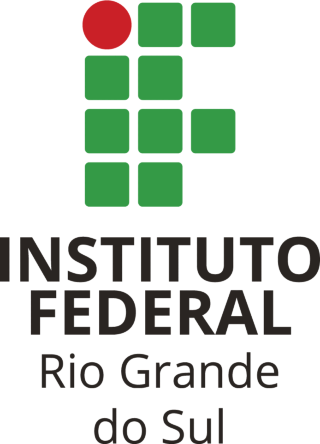Integração lavoura pecuária: influência do pastejo e da taxa de lotação de bovinos sobre a produção agrícola e pecuária
Show simple item record
| dc.contributor.advisor |
Confortin, Anna Carolina Cerato |
pt_BR |
| dc.contributor.advisor |
Campos, Ben-Hur Costa de |
pt_BR |
| dc.contributor.author |
Streit, Dayala Marina Ubessi |
pt_BR |
| dc.date.accessioned |
2024-09-17T22:44:51Z |
pt_BR |
| dc.date.available |
2024-09-17T22:44:51Z |
pt_BR |
| dc.date.issued |
2022 |
pt_BR |
| dc.identifier.uri |
https://dspace.ifrs.edu.br/xmlui/handle/123456789/1505 |
|
| dc.description.abstract |
A integração lavoura pecuária é um sistema que tem por objetivo produzir carne durante o período de inverno nas áreas ocupadas por grãos no verão. Objetivou-se estudar a influência do pastejo e da taxa de lotação de bovinos de corte em pastagem de azevém sobre a produtividade da soja e a compactação do solo em sistema de integração lavoura pecuária. O experimento foi realizado no município de Ibirubá - Rio Grande do Sul com a fase pecuária no inverno de 2020 e soja na safra 2020/2021, em área com histórico de integração lavoura pecuária. O delineamento experimental utilizado foi inteiramente casualizado. Cada parcela configurou um tratamento. Para a variável massa de forragem os tratamentos foram as taxas de lotação: T1= pastejo com lotação fixa de 2,7 animais/ha, T2= pastejo com lotação fixa de 2 animais/ha e T3 = sem pastejo. Para as variáveis ganho de peso, peso inicial, peso final e ganho médio diário (GMD) dos bovinos de corte, o tratamento foi composto apenas do fator taxa de lotação, sendo dois tratamentos: T1 = lotação fixa de 2,7 animais/ha e T2 = pastejo com lotação fixa de 2 animais/ha. Para verificar os efeitos do pisoteio animal realizou-se avaliações de densidade do solo (DS) e resistência do solo à penetração (RP). As análises foram feitas em um sistema bifatorial, onde: fator A corresponde aos tratamentos que são as taxas de lotação (T1= pastejo com lotação fixa de 2,7 animais/ha, T2= pastejo com lotação fixa de 2 animais/ha e T3 = sem pastejo) e o fator B as épocas de coleta (T1 = antes da entrada dos animais para pastejo, T2 = após a saída dos animais da área e T3 = após o cultivo
da soja). A variável de produtividade da soja foi avaliada em três tratamentos: T1= pastejo com lotação fixa de 2,7 animais/ha, T2= pastejo com lotação fixa de 2 animais/ha e T3 = sem pastejo, em 5 repetições. O GMD não foi afetado pela taxa de lotação. A DS não foi afetada pelo pisoteio bovino e nem pelas épocas do ano. A resistência do solo à penetração foi influenciada pelo pisoteio bovino na camada superficial e após a saída dos animais da área. A
produtividade da cultura da soja não foi influenciada pelos diferentes tratamentos do período do inverno. |
pt_BR |
| dc.description.abstract |
The crop-livestock integration is a system that aims to produce meat during the winter period
in areas occupied by grain in the summer. The objective was to study the influence of grazing
and stocking rate of beef cattle on ryegrass pasture on soybean productivity and soil
compaction in an integrated crop-livestock system. The experiment was carried out in the
municipality of Ibirubá - Rio Grande do Sul with the livestock phase in the winter of 2020
and soybean in the 2020/2021 crop, in an area with a history of integration between livestock
and farming. The experimental design used was completely randomized. Each plot configured
a treatment. For the variable forage mass, the treatments were the stocking rates: T1= grazing
with a fixed stocking of 2.7 animals/ha, T2= grazing with a fixed stocking of 2 animals/ha and
T3 = no grazing. For the variables weight gain, initial weight, final weight and average daily
gain (DMG) of beef cattle, the treatment was composed only of the stocking rate factor, with
two treatments: T1 = fixed stocking of 2.7 animals/ha and T2 = grazing with a fixed stocking
of 2 animals/ha. To verify the effects of animal trampling, soil density (DS) and soil
penetration resistance (RP) were evaluated. The analyzes were carried out in a two-factor
system, where: factor A corresponds to the treatments, which are stocking rates (T1= grazing
with a fixed stocking of 2.7 animals/ha, T2= grazing with a fixed stocking of 2 animals/ha and
T3 = no grazing) and the factor B the collection times (T1 = before the entry of animals for
grazing, T2 = after the animals leave the area and T3 = after soybean cultivation). The
soybean yield variable was evaluated in three treatments: T1= grazing with a fixed stocking of
2.7 animals/ha, T2= grazing with a fixed stocking of 2 animals/ha and T3 = no grazing, in 5
replications. The GMD was not affected by the stocking rate. DS was not affected by bovine
trampling or seasons. Soil resistance to penetration was influenced by bovine trampling in the
surface layer and after the animals had left the area. Soybean yield was not influenced by the
different treatments in the winter period. |
en |
| dc.format.mimetype |
application/pdf |
pt_BR |
| dc.language.iso |
por |
pt_BR |
| dc.rights |
Open Access |
en |
| dc.subject |
Soja |
pt_BR |
| dc.subject |
Bovinos de corte |
pt_BR |
| dc.title |
Integração lavoura pecuária: influência do pastejo e da taxa de lotação de bovinos sobre a produção agrícola e pecuária |
pt_BR |
| dc.type |
Trabalho de conclusão de graduação |
pt_BR |
| dc.degree.grantor |
Instituto Federal de Educação, Ciência e Tecnologia do Rio Grande do Sul |
pt_BR |
| dc.degree.level |
Graduação |
pt_BR |
| dc.degree.local |
Ibirubá, BR-RS |
pt_BR |
| dc.degree.graduation |
Bacharelado em Agronomia |
pt_BR |
| dc.degree.department |
Campus Ibirubá |
pt_BR |
Files in this item
This item appears in the following Collection(s)
Show simple item record
Search DSpace
Browse
-
All of DSpace
-
This Collection
My Account



